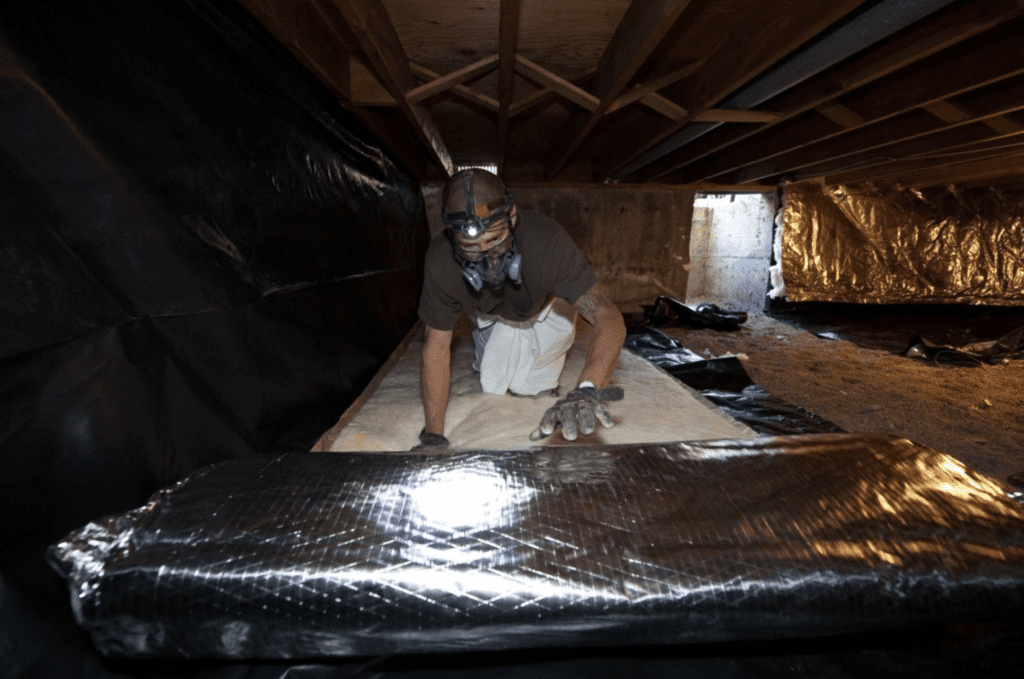Sep 27, 2023
WAP: Digging Into Enhancement and Innovation Funding
The Enhancement and Innovation Funding initiative is a game-changer within the Weatherization Assistance Program, revolutionizing energy efficiency for those in need. This funding injects fresh ideas and advanced technologies to make homes more energy-efficient, comfortable, and environmentally friendly.
By: Nidhi Ravi

The Weatherization Assistance Program (WAP) has been a cornerstone in helping low-income households reduce their energy costs and improve their living conditions for over four decades. As the world’s focus on sustainability and energy efficiency has grown, so has the WAP. In recent years, significant changes and improvements have been made to the program, leading to greater efficiency and expanded assistance for those in need, including the ability to account for non-energy benefits and carbon impacts in the program. The 2021 Bipartisan Infrastructure Law (BIL), created the BIL WAP Enhancement and Innovation Program, which just released a new round of funds in June 2023. The Enhancement and Innovation Funding is a competitive grant program for WAP grantees and other non-profits, that looks to expand access to WAP by combining funds and removing barriers to programs participation. The Enhancement and Innovation Funding represents one of the most exciting developments, which brings a fresh perspective to weatherization efforts.

Image Source: Dennis Schroeder, NREL, The Power of Enhancement and Innovation Funding
The Enhancement and Innovation Funding initiative is a game-changer within the Weatherization Assistance Program, revolutionizing energy efficiency for those in need. This funding injects fresh ideas and advanced technologies to make homes more energy-efficient, comfortable, and environmentally friendly, including:
Advanced Weatherization Techniques
The new techniques introduced through the WAP Enhancement & Innovation program encompass cutting-edge approaches such as advanced energy modeling, integrated renewable energy system installations, and innovative materials for insulation and air sealing. These modern methods aim to enhance the energy efficiency and sustainability of low-income housing, surpassing traditional practices that primarily include basic insulation and air sealing measures.
Integration of Renewable Energy
To promote a greener future, the Enhancement and Innovation Funding encourages the integration of renewable energy sources into the weatherization process. By harnessing solar, wind, or other renewables, households can generate electricity, reducing their carbon footprint and dependency on traditional power grids.
Data-Driven Solutions
Data-driven decision-making is at the core of the Enhancement and Innovation Funding. By analyzing energy consumption patterns, insulation gaps, and other factors, the WAP can tailor solutions to each home’s unique needs. This data-driven approach optimizes energy savings and enhances the program’s overall impact.
Workforce Training and Development
To ensure the successful implementation of innovative weatherization techniques, the Enhancement and Innovation Funding invests in workforce training and development. Equipping weatherization professionals with the latest skills and knowledge empowers them to provide high-quality services, resulting in tangible benefits for families and the environment.
Community Engagement and Outreach
Community engagement and outreach efforts are vital to the Enhancement and Innovation Funding. By collaborating with local organizations, municipalities, and energy partners, the WAP can reach more eligible households, creating positive change within communities.
WAP’s Potential to Drive Equitable Building Decarbonization
The first year of funding, $36.5 million, was allocated to 21 projects nationwide. These projects aimed to explore innovative methods for delivering extensive energy retrofits, often combined with renewable energy sources, while proactively addressing the obstacles historically hindering underserved communities from accessing weatherization assistance. For instance:
- The Native to Native Energy Sovereignty project is led by Red Cloud Renewable, collaborating with the South Dakota Community Action Agency. Led by four Indigenous communities in North Dakota, South Dakota, and Montana, it intends to establish a replicable model to implement deep energy retrofits and renewable energy upgrades in some of the most impoverished counties on United States tribal land.
- Elevate Energy, in partnership with CEDA and Project Home, will create a comprehensive “one-stop shop” program, tackling health and safety issues and weatherization. This program aims to provide low-income multifamily retrofits to 900 units in Cook County, Illinois, and Dane County, Wisconsin, while generating employment opportunities for BIPOC workers and contractors.
- The Philadelphia Energy Authority and the city’s green bank, The Philadelphia Green Capital Corp, will collaborate to provide comprehensive energy retrofits to at least 250 homes in historically marginalized communities, incorporating electrification and rooftop solar. It is also paired with a workforce development program (Green Retrofit Immersive Training, or GRIT) that will graduate a well-trained, local, diverse workforce to fulfill the jobs.
- The Interstate Renewable Energy Council will establish an outreach and technical support program to recruit a diverse workforce, including women, minorities, and underrepresented groups, fostering a new generation of skilled WAP workers. The project will be piloted in three states, New Mexico, Oklahoma, and Wisconsin, to measure the efficacy and impact of the tools and tactics
Additionally, $5.1 million will be allocated to state program offices to integrate distributed energy technologies like solar panels, energy storage systems, and electric water and space heaters as part of their weatherization initiatives.
Conclusion
The Weatherization Assistance Program (WAP) has the potential to play a central role in decarbonizing buildings. The Program’s Enhancement and Innovation Funding marks a significant stride towards a more sustainable future. By embracing advanced weatherization techniques, renewable energy integration, data-driven solutions, and community engagement, the WAP stands firm in its commitment to providing low-income households with. As the program continues to evolve, it will promote energy efficiency and environmental stewardship for future generations.
This article was originally published in the NEEP blog and is republished with permission.





